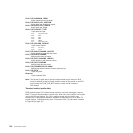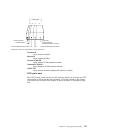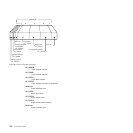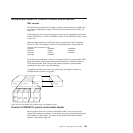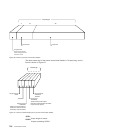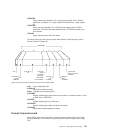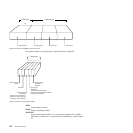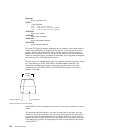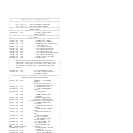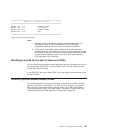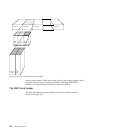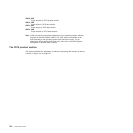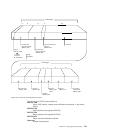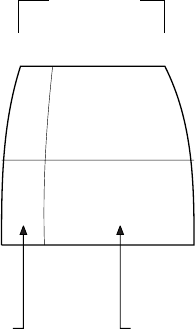
Reserved
2-byte reserved field.
JCSPF1
1-byte flag field:
X’01’ User prefix present
X’02’ Physical start-of-task, JCSPSOTK
X’04’ Logical start-of-task, JCSPLSTK
JCSPTASK
3-byte task number.
JCSPTIME
4-byte time of request.
JCSPTRAN
4-byte transaction identifier.
JCSPTERM
4-byte terminal identifier.
For some CICS journal requests, additional data is included in the system prefix to
identify more specifically the originator of the request. This extra data follows the
common fields of the system prefix, and is usually variable in length; hence the
need for the length field JCSPLL at the start of the system prefix. All the following
have their own prefix layout, and these are described, for the purposes of diagnosis
and recovery, in the CICS Data Areas manual.
The user prefix is a variable length area. It is present if this record has been written
by a user request, an EXEC CICS WRITE JOURNALNAME command. The
information contained in the record is set by the user within the terms of the
command via the JTYPEID, PREFIX, and PFXLENG parameters. Its format is
shown in Figure 96.
Field JCSPUP is set in the system prefix area if a user prefix is present in a journal
record.
The journaled data then follows. If you want a length field for the data, you must
include it in the data. Alternatively, you can compute the length of the data portion
of a journal record by taking the length of the system header (10 bytes), plus the
length of the system prefix (JCSPLL), plus the length of the user prefix (in the field,
if any, defined by yourself), and subtracting the total from the length of the journal
record (JCRLL):
Variable
length
UserprefixdataLengthofuserprefix
Figure 96. Format of the user prefix
734 Customization Guide



